Helen Hunt, 60, Stuns During Her Latest Appearance, and Her Lips Become the Center of Attention

It’s staring at you, and you’re staring at it. A giant eye that seems to be pulling you into an abyss. You’re hovering over it in your space copter. But however scared you might be, you still need to do your job. So, you send your copter down to the surface of the Red Planet. Right, that’s where you are — on Mars.
But first things first: you take a moment to remember everything you know about the fourth planet from the Sun. It’s the last of the inner planets — those are the planets that lie within the asteroid belt. They’re also called terrestrial since they’re made up of rocks and metals. The atmosphere of Mars is much thinner than Earth’s. It contains 95% carbon dioxide and a mere 1% of oxygen. In other words, don’t even think about pulling off your helmet!
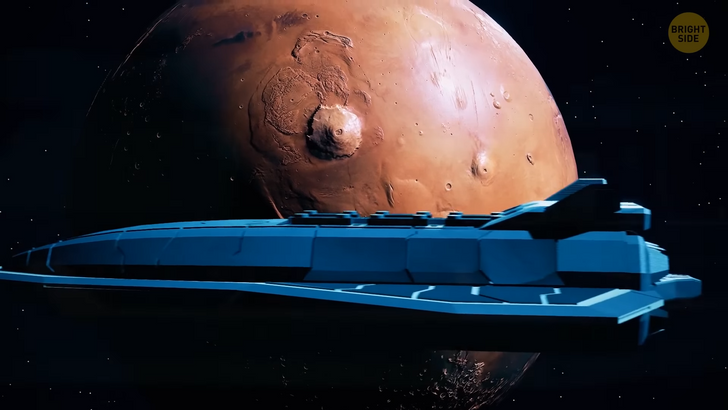
Anyway, there’s no time to waste. You land on the surface of the planet and find yourself in a brownish-red world. That’s a good thing you’re wearing a spacesuit — the place is freezing cold! The thermometer sewn into the sleeve of your suit shows −80˚F! Time to make your first step on the Martian surface!
The planet looks quite colorful, and the hue of a particular area depends on the minerals that make up the soil. The ground under your feet is covered with fine dust. It looks like rust. The same orange dust is in the air. Good thing you have your own supply of oxygen and don’t need to breathe Martian air. The layer of this dust covering the surface of Mars can be from 6 to 40 feet thick. You hope you’ll avoid getting swallowed by some Martian “quicksand”!
You start walking, feeling very light. Mars is just 15% of our planet’s volume and a mere 11% of Earth’s mass. It means that gravity here is much weaker — its pull is 38% as strong as the pull of gravity on the surface of Earth. You jump up and down, then try to run several hundred feet — ha! You haven’t even broken a sweat! What makes it harder for you to explore the place on foot is that the planet’s surface is rocky, covered with craters and volcanoes, old dry lake beds, and canyons.
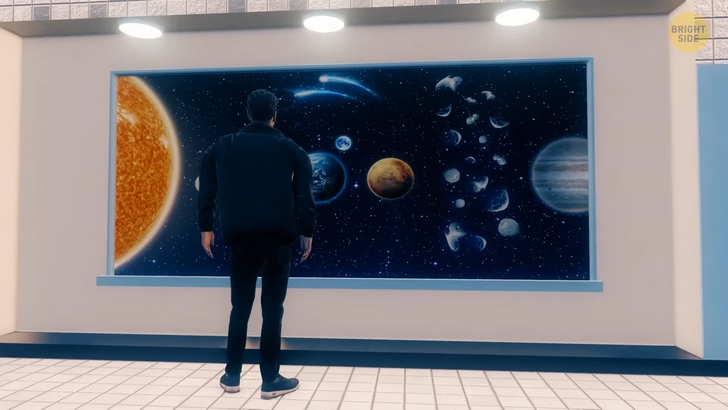
You see something huge towering on the horizon — but you try to suppress your curiosity. You’ll have enough time to figure out what it is later. Suddenly, a massive cloud appears in the distance. It looks as if a huge herd of horses is approaching you. In reality, you’d better get back into your copter and fly away as fast as you can. That’s one of Mars’ infamous dust storms. They mostly occur during the summer in the Southern Hemisphere of the Red Planet. They can sometimes cover the entire planet. And you can see the largest ones from Earth!
You hop into your copter and set a course for the “eye” that scared you so much. Winding channels that look like veins run through the “eyeball.” But the closer you get, the less it looks like an actual eye. Soon, you realize it’s... a crater! It’s giant — almost 19 miles across! Around the crater — which looks as if it has a pupil — there are other, even bigger craters. They likely formed billions of years ago. That’s when Mars had to withstand multiple attacks of space rocks. But why is the eye-crater darker than the surrounding landscape?
Scientists think that once, there was Martian water in the enormous pit. Remember those channels? They were likely carrying that water. And since the crater was filled with water, it stopped some substances and minerals from eroding away. Now, remember that towering something on the horizon? It’s time to go and explore it! When you come close, you realize it’s the largest shield volcano in the entire Solar System — Olympus Mons!
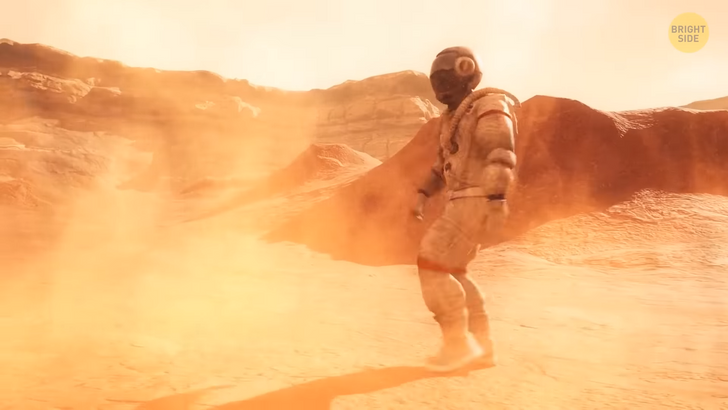
It’s more than 370 miles in diameter, which is almost the same size as the state of Arizona! You tilt your head. Wow. The mountain is 16 miles high. It’s also rimmed by 4-mile-high cliffs. To picture the sheer size of the volcano, let’s make some comparisons. The largest volcano on Earth is Mauna Loa — towering around 2.5 miles above sea level and stretching 75 miles across. Sounds impressive! But the volume of Olympus Mons is around 100 times larger than that of Mauna Loa! The Martian giant could swallow the whole chain of Hawaiian Islands from Kauai to Hawaii!
But why is this volcano SO large? It might be the result of lower surface gravity and higher eruption rates. Or the reason may be the Red Planet’s crust, which is very different from Earth’s — it’s static. On our planet, the crust is made up of 15 to 20 moving tectonic plates. As plates move over hotspots producing lava, new volcanoes form, and the already existing ones become extinct. That’s why lava can get to the surface through many vents.
But on Mars, the crust isn’t broken into the same tectonic plates as on Earth. And the lava has nothing to do but pile in one very, very large volcano. So, how about getting closer to the enormous mountain? But once you step out of your copter on Martian soil, the ground under your feet starts shaking! That’s a marsquake! But how can it happen if Mars doesn’t have actively shifting tectonic plates?! Specialists from NASA are sure marsquakes occur when energy inside the planet gets suddenly released. It leads to rock fractures and cracks in the planet’s crust.
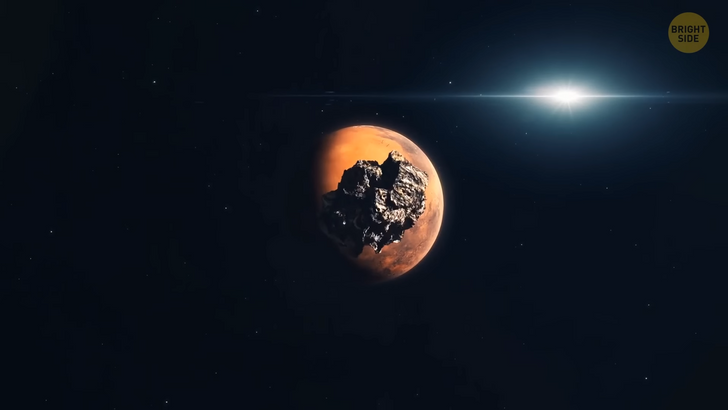
Another powerful jolt, and one of such cracks opens right next to you! You fall to the ground, afraid to move. But soon, everything calms down. You wait for a couple of minutes — just to be sure — and get up. Oh, look! Here’s a perfect opportunity to explore the insides of the Red Planet! The crack is large enough to send a special research robot!
The planet’s crust is thin and consists of volcanic basalt rock. The mantle that surrounds the core of the planet is made up of thick silicates, oxygen, and some other minerals. You can probably compare it with soft rocky toothpaste. Mars’ mantle is also much thinner than Earth’s. It’s just 800 to 1,100 miles thick. As for the planet’s core, it’s made mostly of iron, nickel, and sulfur and is between 900 and 1,200 miles wide. This core doesn’t move. That’s why Mars doesn’t have a planet-wide magnetic field.
Unfortunately, your drone is now lost in the depths of the Red Planet. You leave it there and continue your exploration. Your next destination is Valles Marineris. It sounds more like an Italian red sauce, but it’s really an enormous canyon — or rather a canyon system — that runs along Mars’ equator. It’s as awe-inspiring as Olympus Mons — more than 2,600 miles long and over 4 miles deep! The thing is so huge it could span the entire continental United States from the Pacific to the Atlantic Ocean!
Let’s make another comparison. One of the most famous canyons on Earth is the Grand Canyon in Arizona. But it’s 10 times shorter and around 4 times less deep than the canyon on Mars. Some scientists think that Valles Marineris is the edge of an enormous tectonic plate. It moves so slowly that almost nothing has happened in that region over millions of years. And the movement of this plate probably began 3.5 billion years ago.
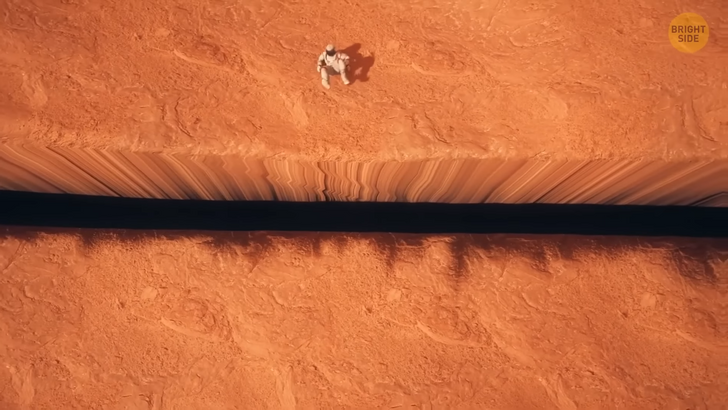
Anyway, the only thing left on your today’s to-do list is to visit Mars’ moons. They’re among the tiniest in the Solar System. Phobos is the larger of the two. It orbits a mere 3,700 miles above the surface of Mars.
There’s no other known moon that travels closer to its mother planet. It whips around the Red Planet three times a day, while the second moon — Deimos — needs 30 hours to complete one orbit. Phobos is getting closer and closer to Mars — about 6 ft each 100 years. Within the next 50 million years, it’ll either crash into the planet or break apart and form a ring.
Happy but tired, you return to your spaceship. Tomorrow, you’ll continue exploring the magnificent Red Planet. And who knows what discoveries are awaiting you?











